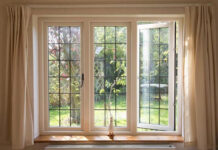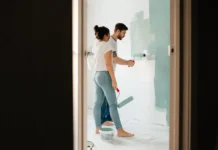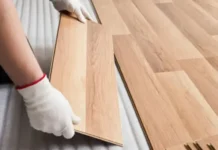The color schemes you choose for your home significantly impact your mood and energy levels. They also reflect your personality, reflecting your style and characteristics. Plus, using the right colors is essential to create the desired ambiance and boost the aesthetic appeal of your home. For all these reasons, it is important to understand the psychology of room colors for all these reasons.
The good news is that picking the best colors for your walls and décor isn’t that tough if you have a rudimentary knowledge of colors and their effects. You don’t even have to care about color trends all the time. Color psychology says that the secret is choosing a pleasant combination of colors that elicit positive and desired emotions.
A Sneak Peek into Our Favorite Colors
Although most of us don’t spend much time thinking about it, the color of our rooms impacts our daily lives. Our moods and ideas are influenced by the hue of our surroundings, which might vary depending on our age, gender, ethnicity, and climate. So, when it comes to home improvement and decorating, it’s critical to avoid using colors that are likely to evoke negative emotions in most individuals. This is where color psychology comes in.
Whether you want to add periodic bursts of color by choosing the right color rugs and pillows or paint your entire area from top to bottom, read on to learn more about color psychology in interior design and discover the emotional impacts of your favorite colors.
Red
Red is a more dramatic hue in the books of colors and is ideal for arousing emotions. It is frequently used with sentiments such as passion, excitement, and vitality. Red is also associated with ambition, activity, and willpower. Whether you use deep hues such as maroon or light hues such as ham red, red fosters an aura of affection and fellowship. By incorporating red into your design concepts, you may infuse the room with enthusiasm and vitality.
Red works well in business buildings or home offices, as well as in the living room and bedroom. It also stimulates leadership and a high degree of energy and friendliness in offices. Another reason why we love red so much is that it has a number of lovely sister tones, like tomato red, crimson, and burgundy. As a result, whether you’re looking for a rich, traditional design or a pop-art vibe, red can help.
Blue
Blue is one of the most powerful hues in the color psychology spectrum. Deep, powerful blues like navy and royal blue inspire confidence and are associated with positive characteristics like loyalty, trust, peace, and success. On the other hand, the lighter hues of the color create an atmosphere of serenity and tranquility in the home, making them ideal for bedrooms, bathrooms, and living spaces where you can unwind.
You can use blue in multiple ways to create different moods. For example, you can use Aqua blue with shades of green, such as seafoam, to add a beachy vibe to a traditional atmosphere. On the other hand, a medium-blue ceiling combined with white walls and blue molding can be energizing and enjoyable, while midnight blue combined with amethyst accents can give a bedroom ultra-luxe air.
Black
Black is the universally preferred color in all spheres of life. Whether you’re unsure about what to wear or which color of furniture to choose, black’s neutrality ensures that it’s a fail-safe choice that offers sleek sophistication. Although it is a well-known accent color when employed widely in a room layout, the psychology of this hue results in the sense of strength, drama, and mystery. It creates easily stylish rooms that are ready for any accent color.
Black works well in modern and industrial settings, and it never goes out of style, giving even historic interiors a contemporary feel. You can put a timeless spell on a room with crisp furniture groupings, distinct architectural elements, and sophisticated upholstery.
Green
Green is an incredibly adaptable color, and different hues of green elicit a range of emotions. While bright and Aqua green is relaxing, dark green is predominantly connected with avarice and envy. On the other hand, olive green is a color associated with peace and harmony.
Green is a versatile color that may be used in various hues throughout the home. You can use brighter tones on the walls and dark shades of green with plants to create contrast. The heavy shade’s effect is mitigated by plants, which naturally remind people of nature. It evokes notions of balance, growth, and restoration. It immediately transports you to the natural world and is an excellent method to feel closer to nature, especially if you live in a city with minimal natural flora.
Green is a gorgeous color in a variety of shades, from emerald and jade to olive and lime. It can be usedin some of the best color schemes for your home, especially for rooms that require mental expansion, such as kitchens and home offices.Plus, since it’s so closely associated with money, it’s also a reasonable choice for commercial premises.
Yellow
Unsurprisingly, yellow is associated with brightness, happiness, optimism, and vitality in color psychology. The color is always brilliant, whether it’s mustard, lemon, or baby yellow. While playful colors are ideal for children’s bedrooms and nurseries, yellow can also be used as a ‘grown-up’ color as it blends well in almost any room.
However, as with many bright tones, it can be challenging to make a room work from top to bottom, yet vivid yellow furniture and accessories make for a stunning style. Maintain golden hues and incorporate them into darkish regions of your home to create an illusion of light and spaciousness. Check out more tips to make your space look brighter here.
Purple
Purple is connected with many positive emotions in color psychology, ranging from depth and creativity to imagination and majesty. While it is perfectly at home in feminine rooms, darker shades of the hue may also be extremely masculine.
It has a regal aura and implies richness. Consider incorporating it into a dressing room to create a genuinely unique space or use it to take over your entrance corridor to impress guests immediately.
Gray
Gray is a neutral hue that evokes feelings of elegance and grace. Although there is some debate over the effects of gray on the human mind, it can be highly beneficial when used properly. In color psychology, it is believed that gray color affects one’s perceptions of security, intellect, and solidity.
Additionally, it is claimed to instill a sense of serenity and composure—a great feature for families with small energetic children. However, certain individuals may find the color depressing.Gray can be utilized as a neutralizer in conjunction with strong color schemes for homes.
While it is recommended to avoid light gray walls, you can use dark gray on one and surround it with cheerful colors such as white, yellow, or red. Gray hues can also be used for furniture in a bright room to lend an air of refinement and sophistication to the design scheme.
The Bottom Line
Color psychology in interior design is a vast field of study. Whether it’s a residential or commercial property, the right color scheme can make a significant difference in the lives of the occupants. An interior design course should provide deeper understanding of and advanced execution techniques relevant to color psychology.
Generally, energetic shades like red, white, and black work well for workaholics since they stimulate the individual to achieve better. On the other hand, calmer hues such as blue or green are appropriate for individuals who suffer from anxiety, loss, or despair.
All in all, it is important to educate yourself on color psychology to choose the best colors for your walls and décor. Happy decorating!
Read More: The Importance Of Professional Translations Within The Legal Sector



































































